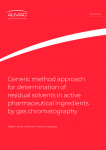ITI launches €7.9 million programme
Pharmaceuticals have entered into a £5.5 million (€7.9 million)
R&D programme to develop new screening and safety models to
more accurately predict the effects of drug compounds and their
breakdown products in the human body.
The R&D programme aims to develop an extensive range of new transgenic mouse models for predicting the pharmacokinetic and toxicological effects of candidate drug compounds and their metabolites in the human body.
The process by which drugs are metabolised by the body prior to being excreted is a major determining factor in drug development. Metabolism can affect virtually all aspects of drug action and if a safe drug is metabolised to an unsafe metabolite then this has potentially lethal consequences in man.
One of the standard ways to evaluate the pharmacokinetic and toxicological profile of drug development candidates is to use animal models. However standard models often metabolise drugs differently from humans and therefore the data they provide is not predictive. As a consequence, drugs that are safe in animals could be toxic in man, and vice versa.
Around 40 per cent of drug failures in clinical trials in humans are a result of unexpected metabolism of the drug and pharmaceutical companies recognise the importance of early and predictive testing to identify the most promising compounds much earlier in the development process.
The programme will use mice for those human genes involved in drug metabolism and safety studies. An example is the cytochrome P450-dependent monoxygenases (CYP) family, of which the CYP3A family (including CYP3A4) accounts for the metabolism of up to 60 per cent of drugs.
The programme will also focus on drug transporters including Mdr1; and nuclear receptors PXR and CAR, which can regulate the activity of CYP3A4 and Mdr1.
These new models are intended to address a crucial and unresolved issue in preclinical drug development; namely the determination of the correct absorption, distribution, metabolism, excretion and toxicity (ADME-Tox) profile of drug candidates.
CXR Biosciences and Artemis Pharmaceuticals intend to provide complementary research expertise, jointly commercialising the programme outputs. The programme also has the potential to generate important technologies and know-how for the development of cell-based ADME screens.
The predictive technologies will also be used to re-evaluate or 'rescue' compounds abandoned at the preclinical stage because of negative results from studies using less relevant models. These compounds could then be entered back into the drug development process.
Such studies could increase the efficiency of drug discovery and development by allowing the identification of compounds with the correct pharmacokinetic and toxicity profile at a very early stage and thereby avoid the costly development of problematic compounds.
"Knowing where a drug is distributed in the body, its effects on various tissues and how its breakdown products are removed are crucial to the development of safe and effective drugs," said Dr John Chiplin, CEO of ITI Life Sciences.
Chiplin further commented: "The clear unmet need for technologies addressing this issue is key to driving this programme forward. The involvement of Artemis as one genetics-based company demonstrates the potential of our programmes to attract participants."
Currently alternative approaches using cultured human cells or tissues can provide information predictive for the human, but cannot provide any information on the complex interactions that occur between different tissues in the human body.
Therefore, all the systems available to-date relies on data from multiple technologies and multiple experimental models to try to extrapolate to the human clinical situation.
ITI estimate the ADME-Tox screening market to be worth $3 billion. The majority of this figure is made up of in vivo testing with in vitro testing accounting for a relatively small but growing segment.
The use of transgenic models within the pharmaceutical industry and academia is expected to grow significantly from its current market size, estimated to be $50-100 million. This programme also has the potential to generate important technologies and know-how for the development of cell-based ADME screens.















